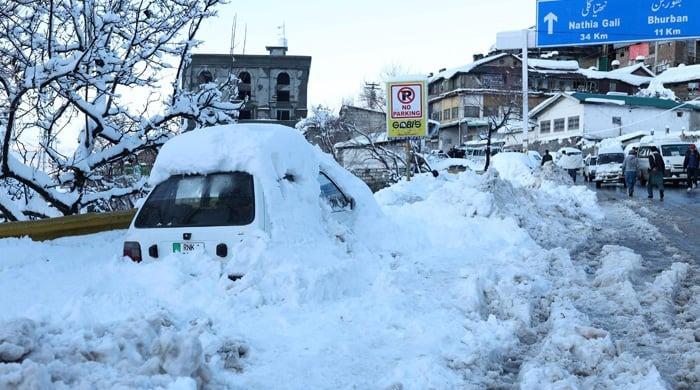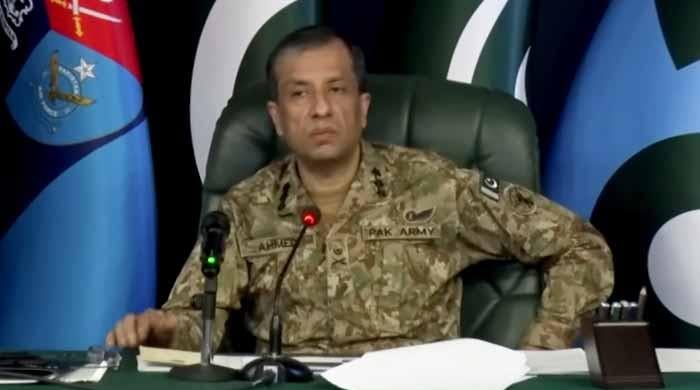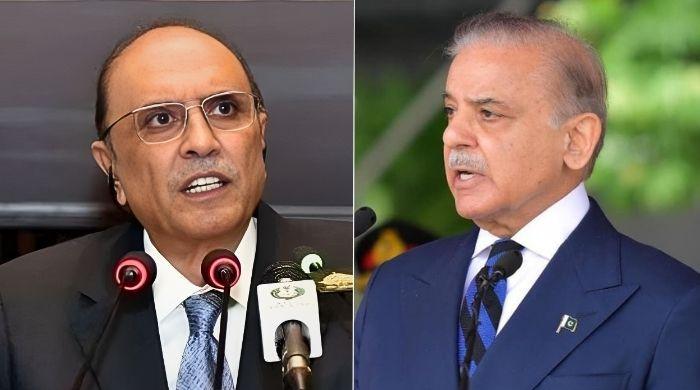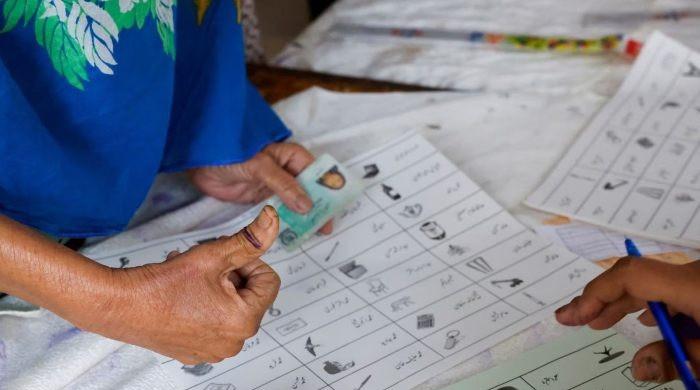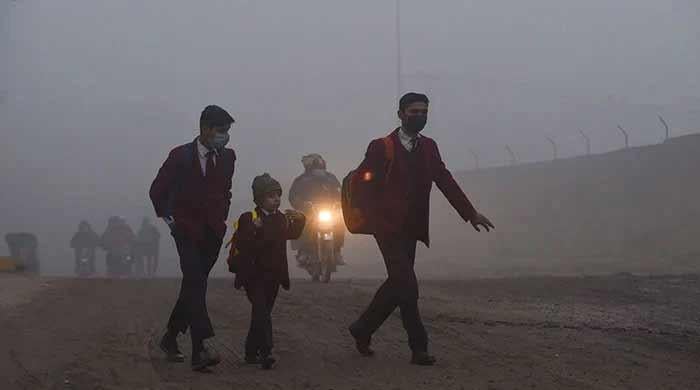Heatwaves in Pakistan recognised as public health emergency by experts
Country has not experienced spring for last two years, says PMD official
June 04, 2025
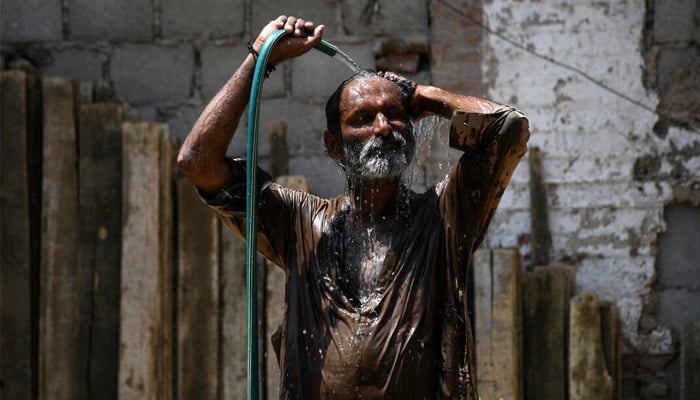
LAHORE: For the second consecutive year, April in Pakistan arrived not with a bloom, but with blistering heat. Across large swathes of Punjab, Sindh and Balochistan, temperatures soared past 40 degrees Celsius, weeks before the official onset of summer.
“In the last two years, Pakistan has not been experiencing spring”, Muhammad Irfan Virk, the deputy director at the Pakistan Meteorological Department (PMD) in Islamabad, told The News. “April is becoming increasingly warmer and hotter. This is concerning.”
The PMD issued five heat advisories across April and May this year, most of them in April, typically considered a transitional month. The hottest day was recorded on April 17, in Sindh’s Shaheed Benazirabad district, where the mercury hit 49 C.
According to the PMD’s monthly climate summary, April 2025 was the second warmest April in the past 65 years – the highest was in 2022. And in both May 2024 and 2025, temperatures surged 4 to 6 C above long-term averages in several areas, the state-run National Disaster Management Authority (NDMA) reported.
“This marks a worrying trend, indicating that future heatwaves may become even more intense due to continued climate shifts and anthropogenic factors”, the NDMA wrote in its 2024 annual publication.
The extreme heat wasn’t confined to Pakistan. A report by ClimaMeter, an international platform that tracks extreme weather events, found that both Pakistan and India experienced an “unusual early arrival of the heatwave.”
“The heatwave in both countries is disproportionately impacting vulnerable sectors of the population and is severely testing overall human limits, pushing the thresholds for survivability”, the report stated.
The report singled out Islamabad as one of the most affected cities, with average temperatures up to +3 C higher than in previous years.
This trend aligns with findings from a three-decade analysis by World Wildlife Fund (WWF) Pakistan, which links rapid urbanisation in Pakistan’s capital city to rising land surface temperatures.
“In Islamabad rapid urban growth has replaced cropland, grasslands and forests — making it one of Pakistan’s fastest-expanding cities”, noted the WWF report. “Islamabad built-up area skyrocketed by nearly 585% while tree cover took a 10% hit between 1990 and 2020.”
Similar urban expansion and loss of vegetation have been documented in Lahore and Karachi.
The government-run NDMA had similar findings. A spokesperson for the NDMA told The News that while southern districts of Punjab, Sindh and Balochistan remain climate hotspots, urban centres are heating up faster. “Lahore, Karachi and Islamabad are warming at a higher rate due to the urban heat island effect”, she said.
David Faranda, a senior climate scientist with the French National Centre for Scientific Research and co-author of the ClimaMeter report, believes the disappearance of spring indicates a deeper climate shift in South Asia.
“The loss of a 'buffer' season like spring reflects how extreme weather patterns are replacing gradual seasonal changes, especially in vulnerable regions like South Asia”, he said. “Heatwaves must be treated not just as weather events but as public health emergencies.” But Pakistan’s current systems are far from equipped to do that.
In May, the minister for climate change told the National Assembly that 568 people died across Pakistan during a six-day heatwave between June 20 and 26 last year. Of these, 427 were from Karachi alone.
However, when The News contacted the Federal Ministry of Climate Change, the PMD and the NDMA, none of the organisations could provide updated figures for heat-related deaths or illnesses. The number presented in parliament, officials admitted privately, came from non-profit organisations, adding that at present there was no mechanism in place to collect such figures.
A government official, who asked not to be named, acknowledged the gap. “Such data needs to be collected. People need to be sensitized to how serious this [heatwaves] issue is”, he added.
Pakistan contributes less than 1% of global greenhouse gas emissions, yet remains among the top ten most vulnerable countries to climate change. Floods, droughts, Glacial Lake Outburst Flooding, and now increasingly frequent and intense heatwaves threaten food and water security and millions of livelihoods.
And the changes aren’t limited to rising heat. In April, Islamabad was battered by a sudden and violent hailstorm — described by residents as a ‘freak’ event — that damaged cars, homes and public infrastructure.
While the causes are global, domestic planning decisions are also exacerbating local impacts, said Hammad Naqi Khan, CEO of WWF Pakistan.
“We are creating heat islands in our urban areas. We are removing vegetation and tree cover from Lahore to Islamabad to Karachi, to Murre”, he said. “Yes, Pakistan’s contribution to emissions is very low, but it also needs to put its own house in order.”
Khan urged the federal and provincial governments to draw up city-specific heat-action plans and empower local governments to implement them.
Faranda agrees. He noted that some cities, like Ahmedabad in India and Seville in Spain, are now naming heatwaves to raise public awareness and frame them as serious threats.
In 2022, Seville named the world’s first heatwave: Zoe.
Faranda also suggested appointing dedicated “heat officers” to ensure coordination across government agencies during extreme weather events.
He further called for climate diplomacy between arch-rivals India and Pakistan to save lives.
“Heatwaves do not recognise borders. Regional cooperation on data sharing, forecasting, public health strategies, and urban resilience could save thousands of lives”, Faranda said. “In a fragmented world, the climate crisis could become a bridge for pragmatic, humanitarian collaboration.”


